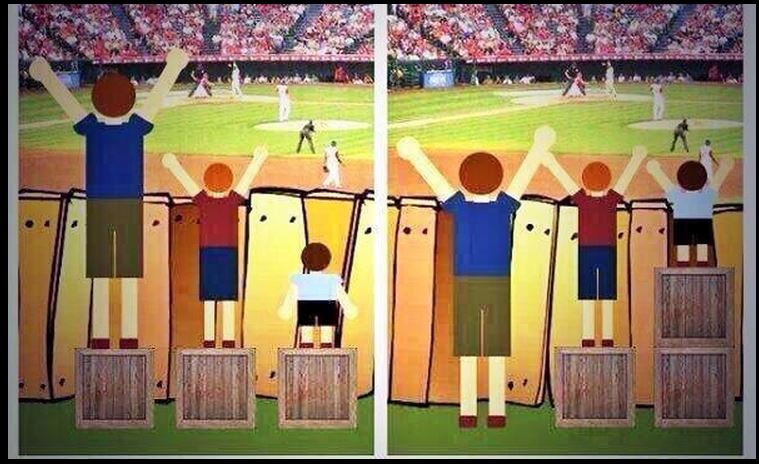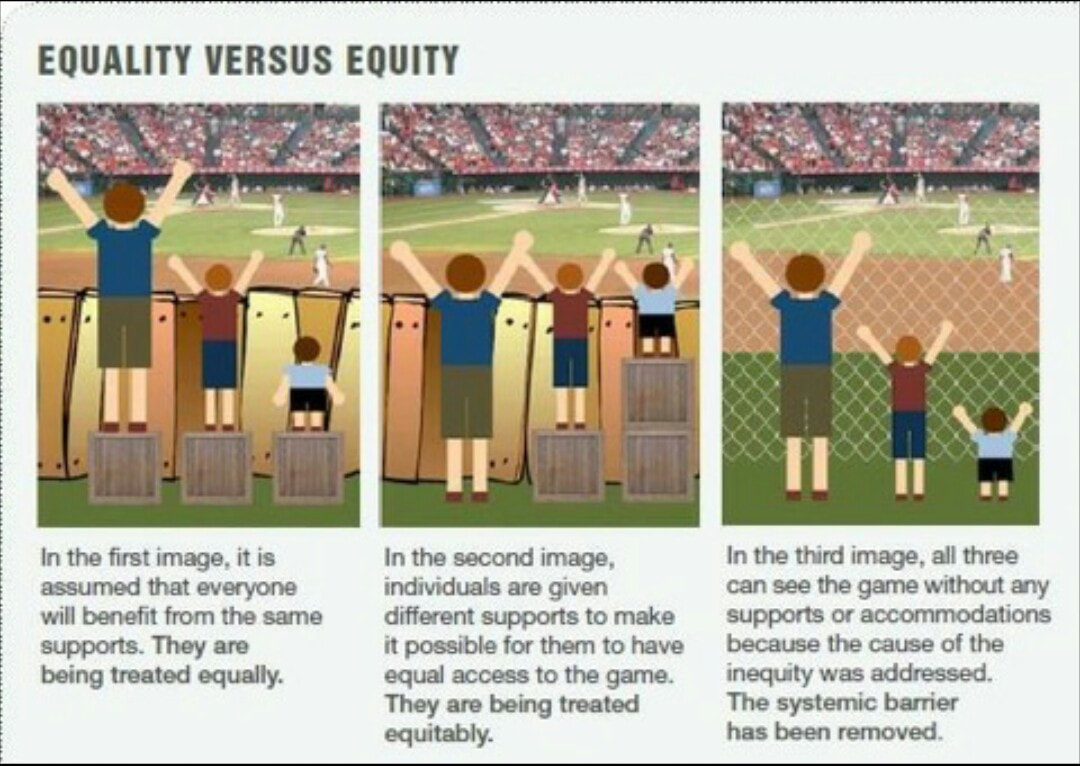"Fair doesn't always mean equal."
As an elementary school teacher, sometimes it is necessary to help young students to develop a more sophisticated understanding of fairness. Part of building classroom community is helping students understand that we all have different needs, and that everyone has an equal right to learn. This picture usually comes to mind when I think of this topic:
The picture above is definitely more widely distributed than this one:
As teachers, we may not have the ability to completely remove the need for accommodations in our classroom, because we lack control over some of the systemic barriers that make learning challenging for some students. For example, we may lack funding for technology, or we may be obligated to follow a set regulations for the administration of standardized assessments.
But we can at least make the effort to empower ourselves to remove as many barriers as we can in our own classrooms in ways that are affordable and feasible. Here are just a few ways that we can help remove barriers in our own classrooms:
- We can make classroom materials accessible - we can put materials within everyone's reach, add labels with words and pictures, keep them in a consistent location so students can remember where they are kept, and make small purchases that increase accessibility in the classroom (e.g. left-handed scissors, magnifying glasses, fidgets)
- We can offer flexible seating - we can have a variety of seating arrangements in the classroom to maximize comfort for all students (traditional desk and chair, stools, stability balls, yoga mats, standing desk, etc). We can allow students to sit on the floor, under tables, anywhere where they feel comfortable, provided that they are following classroom expectations for work. We can also allow movement from one seat to another because some students need more movement than others.
- We can offer accommodations to all students - not everyone will need them, but making them available to everyone takes the stigma away from those who rely on them and can benefit everyone. For example, taking away time limits from a test is not only beneficial for those who need more time, but it can also help alleviate anxiety for those who become anxious when they are being timed.
- We can establish and follow predictable routines - many students thrive on routine, and they like to know what to expect. We can have well-established routines for passing out and collecting materials, transitioning between activities, getting ready to go outside, etc. We can post a visual schedule in a prominent area of the room and follow it.
- We can activate background knowledge before discussing a given topic. Students come to school with a diverse range of experiences and some students may benefit from learning a little bit about a topic before jumping into a lesson. For some students, skipping this step can make a learning activity completely inaccessible to them. And for other students, we can improve the quality of their work by refreshing their memory about a given topic. For example, if we are asking students to write out instructions for making a snowman, we cannot assume that every student has experience with this. Maybe their parents do not allow them to play outside, or perhaps they have moved here from a warmer climate. Before the writing activity, we can discuss the steps involved in building a snowman, watch a video of children building a snowman, or take the entire class outside to build snowmen (if you live in a snowy climate).
- Heighten the salience of goals/objectives - Some students need to have a sense of purpose in learning tasks. They need to know why they are doing what they are doing... or what the point of an activity is. Taking time to review a lesson's objectives in simple language at the beginning of a lesson can help students understand what they need to know and why.



